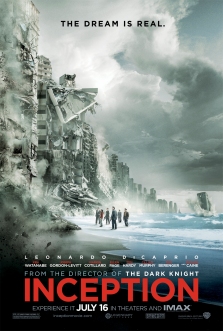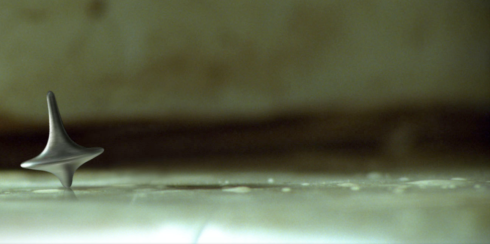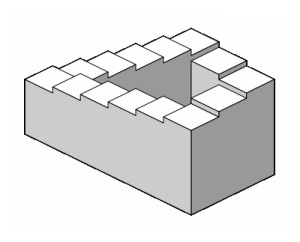 My earliest memories are dreams. In the very first I awake up on a beach in China, with snakes coming out of the sand. How could I not love the opening of Inception, Leonardo DiCaprio’s Cobb in the surf with a pagoda in the background?
My earliest memories are dreams. In the very first I awake up on a beach in China, with snakes coming out of the sand. How could I not love the opening of Inception, Leonardo DiCaprio’s Cobb in the surf with a pagoda in the background?
I’ve been blessed with cinematic, powerful dreams all my life. Sometimes I’ve lived a lifetime in one night – I didn’t know other people had experienced that but, in Christopher Nolan’s film, the characters grow old in the dream, only to wake up young again the next morning. Often, I’ve died in my dreams, so it was good to see that Nolan’s film didn’t promote the popular misconception that if you die in your dreams, you do in real life. In the movie, as in my dreams, it means you (normally) wake up.
Lucid dreaming is having the ability to be aware that you’re dreaming and remain in the dream to control it. The classic conundrum is to know what is the waking state, the “real” world, and what is the dream state. A corollary is to ask which is more important. Read Andre Breton’s Surrealist Manifesto and you may easily become convinced it’s the dream.
In the film the characters carry personal totems so they can tell if they’re dreaming or not. Cobb is never without a small spinning top that apparently only topples in the real world. In dreams it can spin forever. The technique I tend to use is to deliberately look at a scene or view, turn away, turn back and look at it again – if it’s changed it’s an indication I’m in a dream world rather than reality.

When you discover you’re dreaming, the secret is to remember this while staying in your dream. Do that, and you can do anything you want – literally. You become a god, in charge of everything and anything. My first step is normally to fly – there are few things more liberating than swooping across the sky feeling the wind on your face. Sometimes you change your form – if battling a gigantic monster of some description, I reckon I’ll be more successful if growing razor-sharp claws (and just growing).

The Penrose staircase
A slight disappointment of Inception was the lack of “physics”. Near the beginning of the film, new architect Ariadne (played by Ellen Page) asks the question about changing the laws of nature and folds the world in on itself, but that seems to be where it ends. There’s just one later point where Tom Hardy’s Eames magics himself a bigger gun, but that’s all. On the whole, the rules of reality seem to permeate all levels of the dream worlds within the film. A nice touch though, was the inclusion of impossible objects, specifically a Penrose staircase that the characters referred to by name. I’ll be sure to mention it when Sir Roger’s next in my office.
The dream within the dream is a very common by-product for lucid dreamers. Many’s the time I’ve woken up, spent most of the day at work, only to wake up, realize
Michelle Rafferty, Publicity Assistant
It starts with a simple question: Did the totem fall? And then turns into a mind warping exercise of “who incepted who whom?” and “how much was a dream? Am I dreaming?” Christopher Nolan’s Inception has given us hypothesizing hemophilia, for the moment at least. But for some people our real, sans IMAX dreams are enough to sustain a lifetime of “what ifs.”
Dr. Rosalind Cartwright has dedicated her entire career’s work to studying sleep, and in her new book The Twenty-four Hour Mind: The Role of Sleep and Dreaming in Our Emotional Lives she proposes a new theory on the confluence of our dreaming and waking selves. Here Cartwright reveals the scientific truths behind Inception and why, once we resolve Leo’s unconscious self, we should start tending to our own.
1.) In Inception, Ellen Page plays a “dream architect.” Can we actually influence what people dream about?
That answer is: A little. If I drip water on you while you are in REM sleep (when most dreaming happens), you may tell me you dreamt it was raining. You would already have a dream story of your own creation going on but the water can be added to that dream as “Suddenly as I was trying to escape from this guy it started raining.” If I play a tape with the name of the love of your life over and over, you may begin to dream of that person. But what you dream of that person is what your unconscious needs to express about them. Dreams have an imperative of their own and resist our meddling.
2.) In the film, dream death automatically brings the dreamer back to consciousness. I’ve heard that we always have to wake up before that moment of death in a dream. Is that true, can we not “die” in our dreams?
Death is not a common theme in dreams—unless you are elderly or very ill when death is a topic on your waking mind—and we do not often dream our death occurs even when we are falling from a height. We typically wake ourselves up before we hit the ground because our unconscious memory bank has no helpful images stored to handle the emotion in the dream. But others do dream of their own funeral or see themselves dead in the hospital. These dreams are rehearsals in fantasy for what is to come.
3.) The Inception crew can only escape from a multi-layered dream (dream within a dream, within a dream…) through a carefully engineered “kick” or that leg jerk that wakes us up when we are dream free falling. Why is the “kick” so common an experience in sleep?
This is very common especially as we are falling asleep and the muscles relax. We often experience the need to resist that falling sensation and “save ourselves” by abruptly tightening the muscles again. This is called the hypnic jerk. It is a normal response and benign, except that we have to start over to fall asleep again and another hypnic jerk may happen again.
4.) Through a special machine the crew can enter one subject’s unconscious together. Is this something that people actually think could be possible? Has there ever been any record of people sharing dreams?
Very occasionally identical twins who share so much common experience will have dreams that are very similar. Also people who share their waking experiences and tell each other about how they feel about it will have similar dreams on the same night. The next day one can finish the dream story the other is telling because they have had the same dream. None of this is magic or even science. We can know WHEN y
 The student sex column movement (profiled in WireTap with a shout out for my alumni UC Berkeley's "Sex on Tuesday" feature as a forerunner. Also a virtual dating game/social network draws young girls and guys in China. And a promotional online ... Read the rest of this post
The student sex column movement (profiled in WireTap with a shout out for my alumni UC Berkeley's "Sex on Tuesday" feature as a forerunner. Also a virtual dating game/social network draws young girls and guys in China. And a promotional online ... Read the rest of this post
 I set the bar pretty high for "Whip It" back in July when the trailer came out. From those brief two minutes, I caught a glimpse of a quirky, empowering teen movie with a must-own soundtrack and pretty much let myself get hooked. So, was I right... Read the rest of this post
I set the bar pretty high for "Whip It" back in July when the trailer came out. From those brief two minutes, I caught a glimpse of a quirky, empowering teen movie with a must-own soundtrack and pretty much let myself get hooked. So, was I right... Read the rest of this post
 My earliest memories are dreams. In the very first I awake up on a beach in China, with snakes coming out of the sand. How could I not love the opening of Inception, Leonardo DiCaprio’s Cobb in the surf with a pagoda in the background?
My earliest memories are dreams. In the very first I awake up on a beach in China, with snakes coming out of the sand. How could I not love the opening of Inception, Leonardo DiCaprio’s Cobb in the surf with a pagoda in the background?





